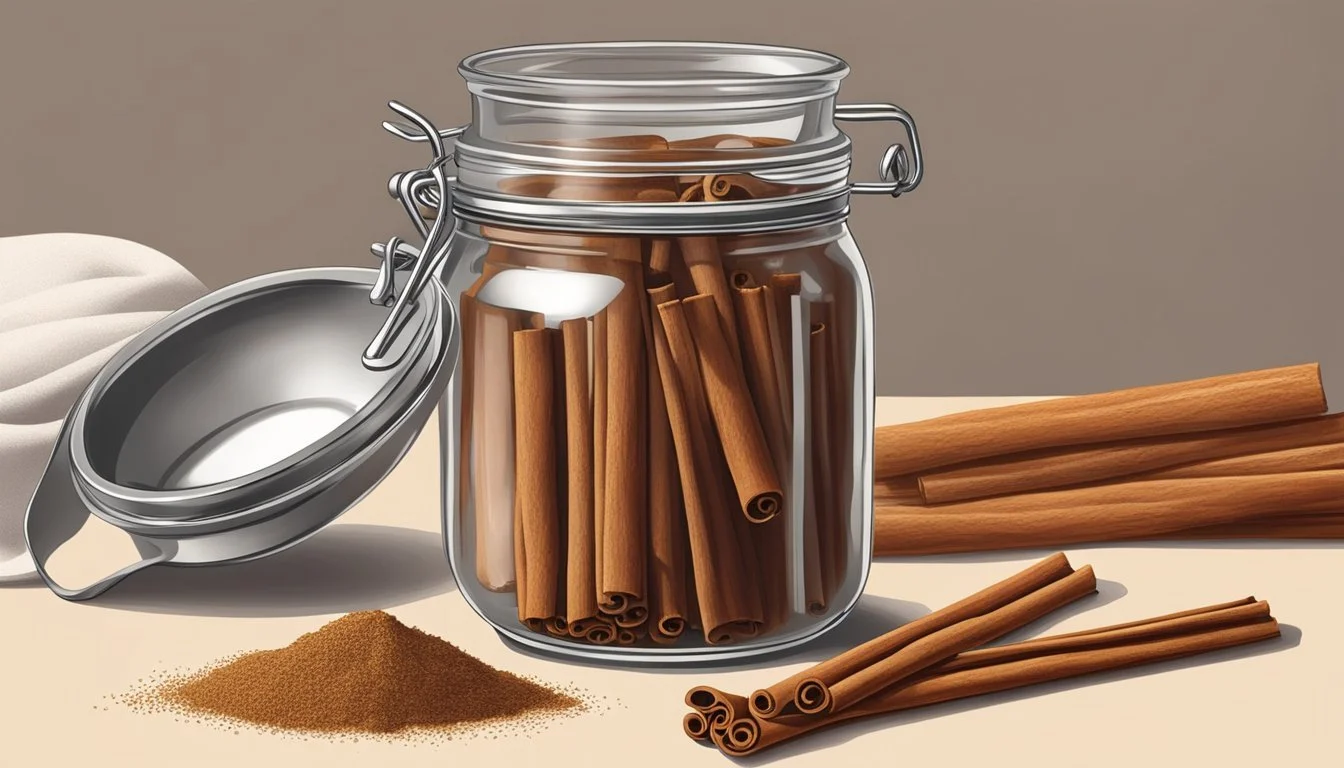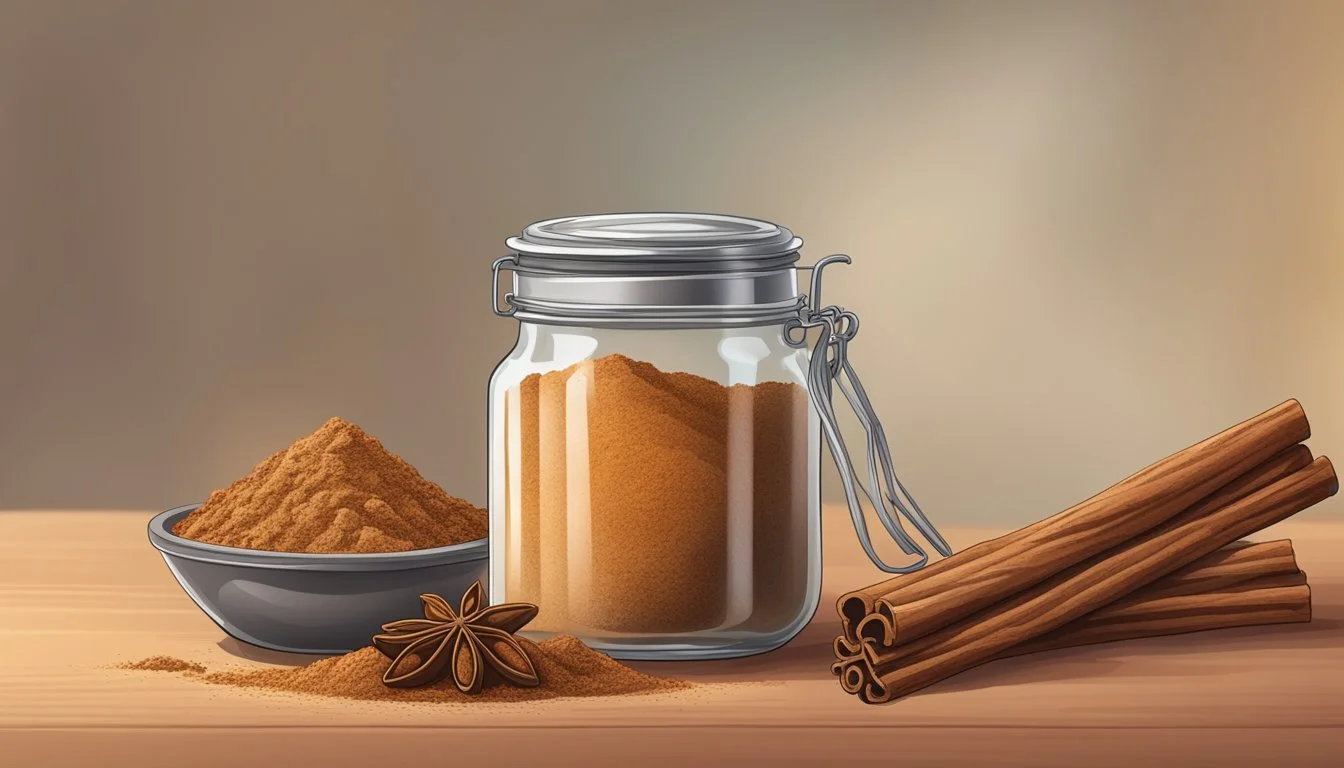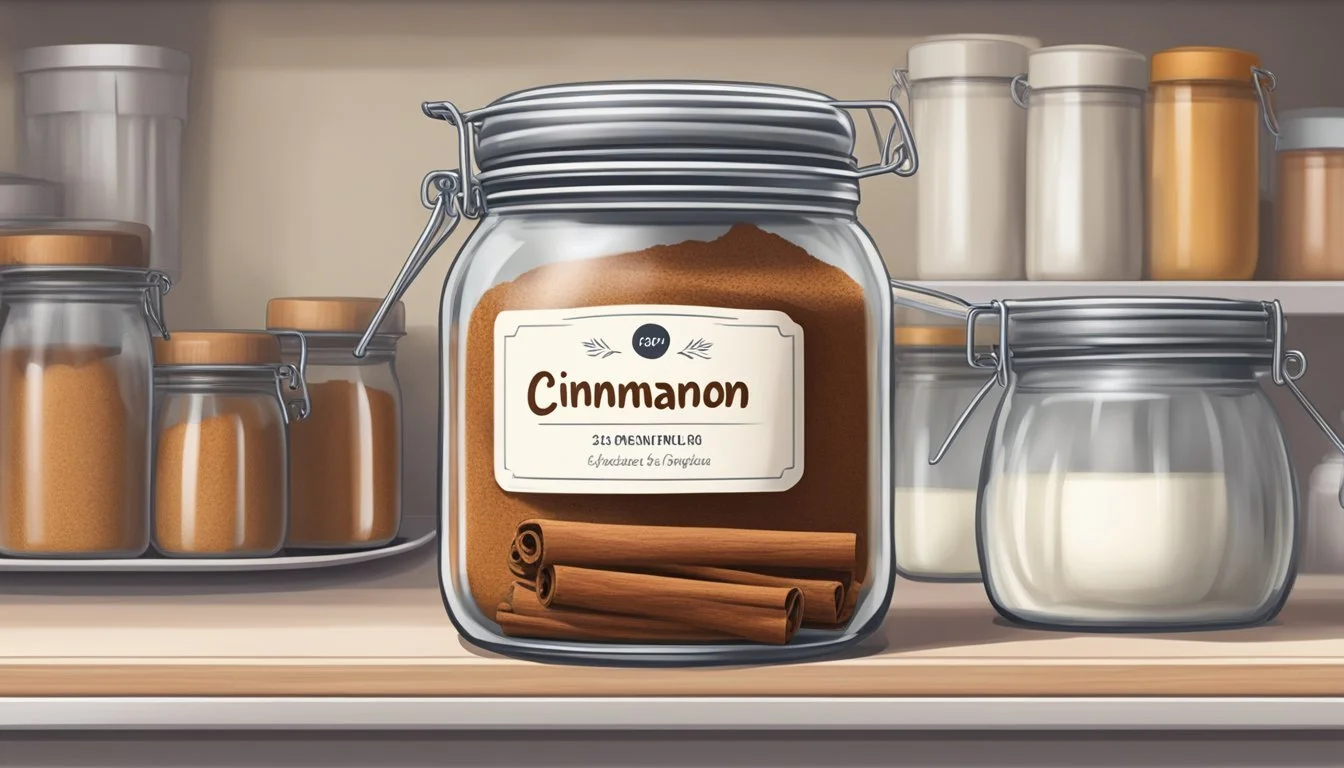Does Cinnamon Go Bad?
Understanding Spice Shelf Life
Cinnamon, a popular spice derived from the inner bark of certain tree species, is known for its distinctive flavor and aroma, which can enhance a wide array of culinary creations. Many consumers wonder about the shelf life and potential spoilage of cinnamon, whether in the form of ground powder or whole sticks. Cinnamon does not truly 'go bad' in the same way that perishable foods do, which means it doesn't spoil or become unsafe to consume after a certain period. However, its quality can deteriorate over time.
When stored in appropriate conditions, ground cinnamon maintains its best quality for roughly 1 to 2 years, while cinnamon sticks can last upwards of 4 years. Proper storage means keeping cinnamon in a cool, dark, and dry area, shielded from heat and moisture, which can accelerate the loss of its flavor and aroma. Cinnamon may lose potency once it has passed its best-by date, but it will usually remain safe to use indefinitely if there are no signs of contamination.
The confirmation of cinnamon's condition involves primarily sensory evaluation. Fresh cinnamon should exhibit a strong fragrance and a vibrant appearance. If the spice presents a muted smell, a dull color, or an absence of its characteristic spicy-sweet taste, this may indicate that it has lost its desired quality and potency. However, even in such cases, using this cinnamon should not pose a health risk, although the resulting flavors in recipes may be less pronounced.
Cinnamon Basics
Cinnamon is a highly regarded spice derived from the inner bark of trees from the genus Cinnamomum. It is cherished worldwide for its warm, sweet flavor and aromatic qualities, making it a staple in various culinary traditions.
Identifying Cinnamon
Cinnamon is commonly available in two forms: as cinnamon sticks and ground cinnamon. Cinnamon sticks are the dried, curled bark from the cinnamon tree, while ground cinnamon is made from these sticks pulverized into a fine powder. One can identify cinnamon by its characteristic reddish-brown color and its sweet, woody aroma that is deeply associated with comfort foods like cinnamon rolls and cookies.
Types of Cinnamon
There are two main types of cinnamon used in culinary practices:
Cassia Cinnamon: Often found in American supermarkets, this variety is stronger and more pungent in flavor.
Ceylon Cinnamon: Known as "true cinnamon," it is lighter in color with a milder, sweeter flavor.
Both varieties are used in cooking and baking, contributing distinctive flavors and aromas to sweet and savory dishes.
Culinary Uses
Cinnamon's culinary applications are extensive. As a spice, it is essential in a variety of baked goods, including breads, pastries, and especially cinnamon rolls. Its warm and sweet flavor profile makes it a favorite for spicing cookies and pies. In savory dishes, cinnamon is often used in spice blends, bringing a subtle sweetness that complements meats and vegetables. It also possesses an ability to enhance the flavor of beverages, from hot cocoa to mulled wines.
Shelf Life and Freshness
The freshness and shelf life of cinnamon are greatly influenced by its form—ground or sticks—and storage conditions. Knowing these factors ensures maximum flavor retention over time.
Shelf Life Determinants
Form of Cinnamon:
Ground Cinnamon: Typically lasts 1 to 3 years beyond its 'best by' date.
Cinnamon Sticks: Can remain fresh for 4 to 5 years, owing to their intact structure.
Ideal Environment: A cool, dark, dry area is crucial for prolonging the shelf life.
Sealed Containers: Essential to protect from moisture, heat, and contaminants.
Freshness Indicators
Color: A vibrant tan indicates freshness.
Aroma: A strong, sweet smell suggests that the cinnamon retains its potency.
Taste: If it has a pronounced, warm, sweet flavor, it is fresh.
Note: A decrease in aroma or flavor intensity suggests a decline in freshness.
Extending Shelf Life
Ground Cinnamon:
Store in an airtight container away from light and heat.
Cinnamon Sticks:
Maintain in cool conditions to preserve essential oils, thus extending shelf life.
Both Forms:
Keeping cinnamon in a consistently dry area prevents mold growth and preserves quality.
By adhering to these practices, one can ensure the enduring freshness and potency of their cinnamon, maximizing its shelf life well beyond the best-by or expiration date indicated on the packaging.
Storage Recommendations
Proper storage methods are essential to preserve the flavor and potency of cinnamon. By adhering to specific guidelines, one can ensure that both whole and ground cinnamon retain their quality over time.
Storing Whole Cinnamon
Whole cinnamon sticks are less prone to losing their flavor and should be stored in a cool, dry place away from direct sunlight. These conditions help to maintain their aroma and potency for a longer period, generally up to 4-5 years.
Storing Ground Cinnamon
Ground cinnamon's shelf life is shorter than that of whole cinnamon. To best preserve its flavor, one should keep it in a cool, dark area. A pantry shelf away from heat sources is an ideal spot, and when stored properly, ground cinnamon can maintain its quality for approximately 2-3 years.
Use of Airtight Containers
Airtight containers are paramount for storing both whole and ground cinnamon. These containers prevent moisture and other contaminants from affecting the spice. They also help to keep the cinnamon away from other odors that could alter its flavor profile.
Refrigeration and Freezing
Generally, cinnamon does not require refrigeration or freezing. However, if one opts for these methods, especially in a more humid or variable climate, it is crucial to use an airtight container to protect against moisture condensation. This is more commonly recommended for ground cinnamon rather than whole sticks.
Signs of Spoilage
When assessing cinnamon for spoilage, one must consider visible changes, alterations in scent, and deviations in taste. These indicators can help determine if the spice has gone past its prime.
Visual Signs
One should inspect cinnamon for any mold growth or wet spots, as these are clear signs of spoilage. Both ground cinnamon and cinnamon sticks should have a uniform appearance. If one notices any changes in color or texture, this could indicate that the cinnamon is no longer suitable for use.
Olfactory Signs
The aroma of cinnamon is distinctively warm and sweet. Any loss of aroma or an off smell is a strong indicator that the spice has lost its potency. If the cinnamon does not smell like it usually does, or if it has no smell at all, these are signs that it may have gone bad.
Taste Test
If visual and olfactory assessments do not confirm spoilage, a small taste test may help. The flavor should be immediately recognizable—if it lacks the characteristic cinnamon taste, or has an altered or lack of flavor, it's likely that the spice has expired. Avoid tasting if mold is present or if the spice has an off smell, as this could pose a health risk.
Health and Safety
Cinnamon is known for its flavorful contribution to culinary dishes and carries an array of potential health benefits. However, it is essential for consumers to be aware of the possible health risks associated with its consumption
Health Benefits
Cinnamon has been recognized for its anti-inflammatory properties, making it a potential ally in reducing inflammation. Its antioxidant capacities are significant; these compounds play a crucial role in combating free radicals within the body. Substantial consumption of cinnamon has been associated with improvements in heart health. It may influence factors like triglyceride levels and total cholesterol, contributing to the prevention of heart disease.
Potential Risks
While cinnamon offers various health benefits, it is not without its potential risks. In excessive amounts, certain types of cinnamon, such as Cassia cinnamon, can lead to liver problems due to a compound known as coumarin. Oral consumption of large quantities of this spice has been linked to mouth sores and low blood sugar levels. Safety is paramount, and as such, the Food and Drug Administration (FDA) has flagged concerns about contaminants such as lead in certain ground cinnamon products, which can pose significant health risks.
Culinary Inspiration
Cinnamon is a versatile spice that plays a crucial role in both sweet and savory culinary applications, enhancing dishes with its warm, sweet, and woody flavors. It can transform a simple ingredient list into a memorable meal or beverage and is a staple in a variety of spice mixes.
Recipes with Cinnamon
Sweet Treats: They often use the enticing aromas of cinnamon. For instance, cinnamon rolls utilize the spice both within the dough and in the glaze, offering a comforting and rich flavor.
Savory Dishes: Cooks might add a cinnamon stick while simmering stews or soups, which imparts a subtle complexity to hearty dishes.
When incorporating cinnamon into recipes, one can start with a small amount and adjust to taste, considering its potency can vary.
Cinnamon as Spice Mix
Homemade Blends: Cinnamon is a key ingredient in homemade spice mixes, such as pumpkin pie spice, where it pairs well with ginger, nutmeg, cloves, and allspice.
Allspice Substitute: While it cannot fully replicate allspice's flavor, in a pinch, cinnamon can provide similar warm and sweet notes to a dish.
Utilizing cinnamon in various spice mixes justifies its presence in any spice cabinet, contributing to its reputation as an essential culinary ingredient.
Additional Tips
Maintaining the quality of cinnamon involves proper storage and monitoring. These additional tips can help extend its shelf life and ensure the spice retains its flavor and potency.
Labeling and Tracking
Labeling: It's prudent for a consumer to label their cinnamon containers with the date of purchase. This is especially important for cinnamon purchased in bulk without a store-provided expiration date. An adhesive label or a piece of masking tape with the date written in permanent marker will suffice.
Ground Cinnamon: They should note that ground cinnamon has a shelf life of approximately 2-4 years.
Cinnamon Sticks: The expected shelf life for whole cinnamon sticks is usually 4-5 years.
Tracking: Consumers should periodically check their spice cabinet and pantry to keep track of the spices' shelf lives. They might consider maintaining a spice inventory list to track expiration dates and ensure they use older spices first.
Dealing with Clumps
Organic Growth Prevention: Cinnamon should be stored in a cool, dry place to prevent any form of organic growth, including mold. This means avoiding areas that fluctuate in temperature or are prone to moisture.
Managing Clumps:
For Whole Spices: Cinnamon sticks are less likely to clump. Any surface moisture can be gently wiped away to maintain the sticks' integrity.
For Ground Cinnamon: If ground cinnamon develops clumps, this is often due to moisture. Consumers can break them up using a fork or sift the cinnamon through a fine mesh. If clumps persist and there is a concern of compromised quality, it's safer to replace the spice to avoid potential quality loss in recipes.






